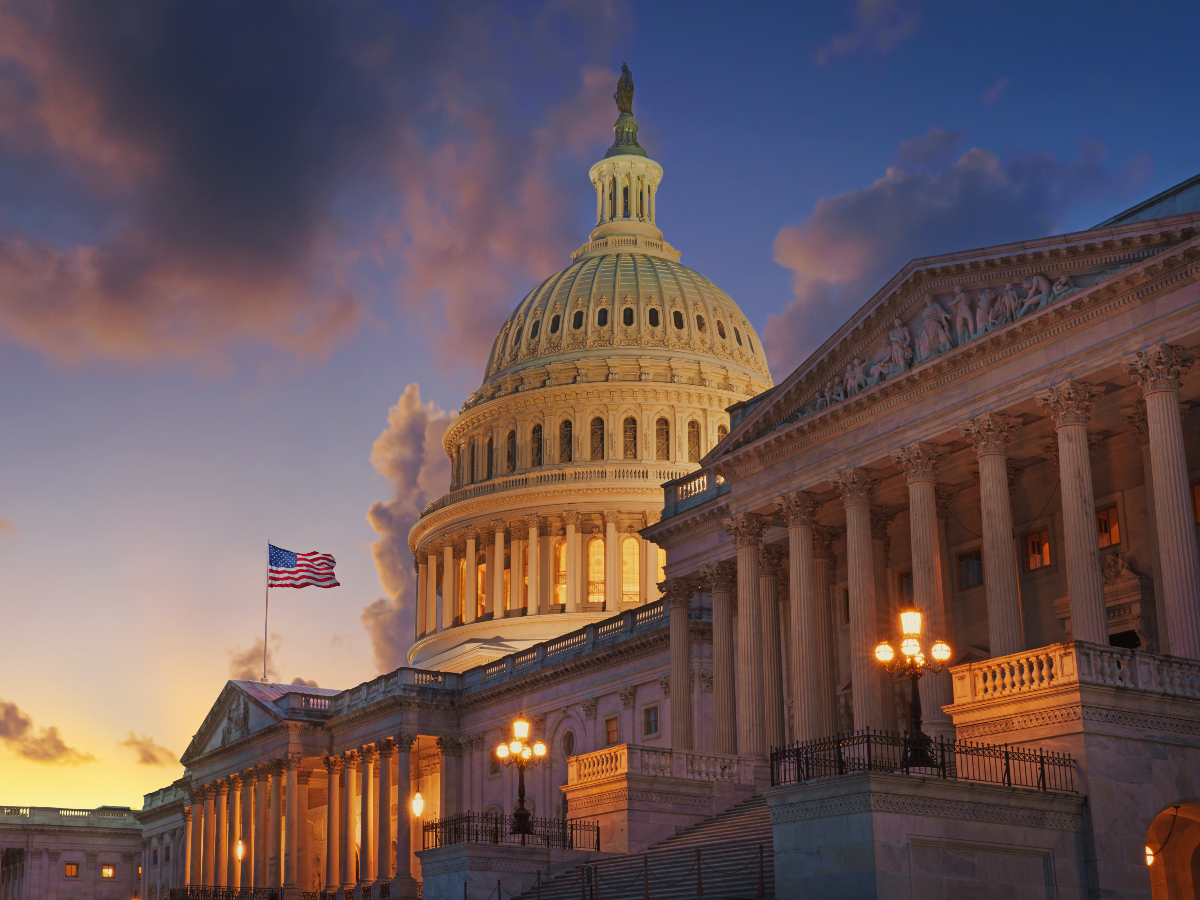The Gist
- Customer data is the foundation. CX leaders in the US say data is the strategic driver of personalization, with transaction history ranked most valuable.
- AI and testing power personalization. Nearly half see AI as indispensable, while 76% call A/B testing essential for uncovering new opportunities.
- Seamless CX drives success. Three-quarters define a “successful interaction” as one that’s frictionless, underscoring how experience consistency outweighs speed or empathy alone.
- Loyalty is the key metric. 42% prioritize loyalty signals over satisfaction scores, aligning with research showing ROI on loyalty initiatives.
- Tech stack not the barrier. 78% don’t see complexity as blocking progress—alignment across IT, product, and marketing matters more than tool sprawl.
CX personalization has become a core driver of customer experience, helping brands build customer loyalty, spark engagement and stand out in competitive markets. By anticipating customer needs and delivering content that resonates in the moment, companies are creating stronger connections and more memorable interactions.
CX leaders shared where personalization strategies are delivering the most impact, the challenges that remain and the innovations redefining what it means to create truly personal customer experiences in the current marketing space.
Table of Contents
- Key CX Personalization Data Takeaways
- Customer Experience Personalization Becomes Strategic Imperative
- Customer Expectations Drive Urgency
- AI Powers Next-Generation Personalization
- Contact Centers Enable Omnichannel Consistency
- Balancing Relevance and Restraint
- Operational Benefits Beyond Customer Satisfaction
- Real-Time Data Drives Future Innovation
- What Drives Your CX Personalization Strategy Most?
- Customer Data as the Foundation
- Meeting Consumer Expectations Responsibly
- From Nice-to-Have to Strategic Growth Driver
- What Is Your Biggest Challenge in Delivering Personal Experiences?
- Which Area Sees the Most Benefit from Your CX Personalization Efforts?
- Web Personalization Gains Momentum Despite Implementation Gaps
- Implementation Challenges Persist
- AI Drives Hyper-Personalization Push
- Organizational Barriers Remain
- What Kind of CX Data Do You Rely on Most?
- What Defines a Successful Customer Interaction for You?
- What Technology Do You Find Most Useful for Optimizing CX?
- How Do You Measure CX Impact?
- What Helps You Uncover New CX Personalization Opportunities?
- What Is the Most Common Barrier to Improving Your Current CX Personalization Strategy?
- Which Department Do You Align With Most to Meet CX Personalization Goals?
- What Is the Top Priority for Improving CX Personalization?
- How Do You Stay Informed About CX Personalization Trends?
- How Often Do You Review Your Personalization Efforts?
- How Do You Keep Your Personalization Messaging Relevant?
- Which City Best Represents Your Primary Work Location?
- A New Era of CX Personalization
- Methodology
Key CX Personalization Data Takeaways
Expand the section below for a concise summary of research findings.
-
Most CX leaders in the US agree that customer data is strategic in driving their personalization strategies
-
Only 14% of CX leaders say that technology gaps are a significant challenge in delivering personalized experiences
-
59% of CX leaders are neutral about whether email campaigns provide the most benefit from their personalization efforts
-
Transaction history data is highly valuable for 45% of CX leaders
-
A seamless experience is essential in defining a successful customer interaction for 76% of CX leaders
-
49% of CX leaders agree that AI tools are indispensable for CX optimization
-
Loyalty signals are impactful metrics for 42% of CX leaders when determining value
-
A/B testing is essential for 76% of CX leaders looking for new personalization opportunities
-
78% of CX leaders say that a complex tech stack isn’t a barrier to improving their current personalization strategy
-
IT departments are in perfect alignment to meet 36% of CX leaders’ current personalization goals
-
31% of CX leaders say that automation is an important priority for improving personalization
-
Industry reports keep 97% of US CX leaders informed about personalization trends
-
66% of CX leaders are neutral about reviewing their personalization efforts monthly or quarterly
-
29% of CX leaders keep personalization messaging relevant with customer personas
-
65% of US CX leaders say that San Francisco is a potential choice for their primary work location
Customer Experience Personalization Becomes Strategic Imperative
Before we dig into the specifics of the CX personalization data, let's level-set: Customer experience personalization has evolved from an optional enhancement to a critical business requirement, as organizations face mounting pressure to deliver tailored interactions across all touchpoints.
Trish Wethman, chief experience officer at Pontem Tech Partners, told CMSWire that personalization is already becoming the key differentiator in the experience space; the capabilities that AI is bringing will only drive that more. "The savvy CX leaders will be the ones who know how to bring together the right functions to get it done quickly and tie it back to business outcomes," Wethman said.
The State of the CMO 2025 report found that 69% of CMOs are under pressure to prove ROI, up from 59% two years ago. This intensifying demand makes personalization not just a tactic, but a strategic requirement for demonstrating measurable business impact.
Customer Expectations Drive Urgency
McKinsey research reveals that 71% of consumers expect businesses to deliver personalized interactions, while 76% express frustration when companies fail to meet these expectations.
The State of the CMO 2025 report shows that 56% of marketing leaders now report rising expectations for customer service. This aligns with the data here showing how critical personalization has become for loyalty and retention.
Customer loyalty depends heavily on personalization effectiveness. Twilio's State of Customer Engagement report found that 83% of people are more likely to remain loyal to brands offering personalized experiences. Conversely, nearly two-thirds will stop purchasing from companies that don't personalize service.
"But let's get clear on what personalization really means," Wethman said. "First, it's more than email campaigns. It is powerful predictive analytics, contextual awareness, hyper relevant content recommendations and automated service interactions that meet the customer where they are it."
AI Powers Next-Generation Personalization
The State of the Digital Customer Experience 2025 report identifies AI and machine learning as the top investment priority for DCX teams, mentioned by nearly one in three, reinforcing the central role of AI in powering next-generation personalization.
The personalization landscape has progressed significantly from basic demographic segmentation to sophisticated, AI-driven experiences. Machine learning algorithms now analyze vast amounts of data in real time, enabling brands to predict customer behaviors and deliver individualized recommendations.
AI-driven personalization is now considered essential for delivering relevant, timely experiences across multiple channels simultaneously.
Contact Centers Enable Omnichannel Consistency
Integrating customer data across channels gives agents a 360-degree view, enabling consistent, tailored interactions that build trust and strengthen relationships. According to industry analysis, personalization in contact centers boosts customer satisfaction, loyalty and revenue by delivering experiences that meet individual needs and preferences.
Balancing Relevance and Restraint
The State of the CMO 2025 report found that 53% of marketing leaders cite the need to integrate data from multiple sources as a top trend. Without this integration, personalization risks becoming irrelevant or even alienating to customers.
The most effective personalization strategies balance relevance with restraint, ensuring recommendations provide genuine value without becoming intrusive or contextually inappropriate. Poorly executed personalization, such as intrusive retargeting, can undermine trust and drive customers away.
"This is so true and so important," Wethman said. "Understand that personalization done poorly will not only fail to deliver expected outcomes; it will erode trust and drive customers away."
Operational Benefits Beyond Customer Satisfaction
Personalization delivers measurable operational benefits, reducing customer effort and boosting efficiency by eliminating repetitive tasks and redundant data entry processes. Empowering customers with personalized experiences across every touchpoint is key to building long-term relationships.
"This is where knowing your customer's journey continues to remain a critical component of your success," Wethman said. "The tools for journey mapping are evolving so quickly, there will soon be no excuse to NOT have insights into the key touchpoints and areas of friction, and using that to power your personalization strategy will be foundational."
Real-Time Data Drives Future Innovation
Real-time data serves as the backbone of modern personalization, allowing brands to respond quickly and intuitively to customer needs. The future of customer experience lies in data-driven personalization that feels as natural as friendly conversation.
Related Article: Not Your Average CX: The Rise of Hyper-Personalized Experiences
What Drives Your CX Personalization Strategy Most?
CX leaders in the US agree that customer data is strategic in driving their personalization strategies
Every strong personalization strategy starts with the same essential ingredient.
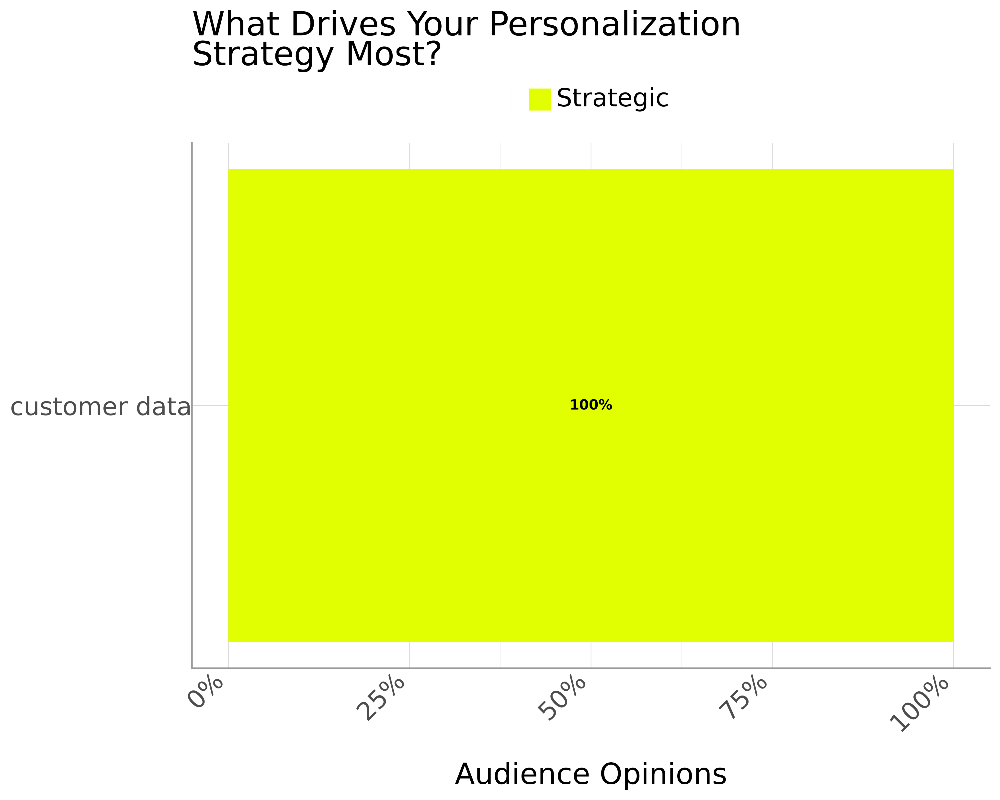
Our data shows that customer data is at the core of every personalization strategy. Most CX leaders in our audience called it strategic, but it’s not just something businesses value. Customers expect it, too.
Recent research found that 6 in 10 consumers believe companies should use the data they collect to personalize experiences. Meeting that expectation means using data responsibly to anticipate needs, shape offers and create interactions that feel genuinely tailored.
When strategies reflect business goals and what customers are looking for, personalization moves from being a nice touch to something that builds stronger, more lasting connections.
Customer Data as the Foundation
Our data shows that customer data is at the core of every personalization strategy. Most CX leaders in our audience called it strategic, but it’s not just something businesses value. Customers expect it, too.
The CDP Market Guide 2025 reinforces this point, defining a customer data platform’s role as capturing customer information from many sources, managing it centrally and resolving disparate data into a unified customer profile. The guide identifies four critical functions of CDPs: data capture, data management/unification, analytics, and activation — the operational pillars that make personalization possible.
Meeting Consumer Expectations Responsibly
Recent research found that 6 in 10 consumers believe companies should use the data they collect to personalize experiences. Meeting that expectation means using data responsibly to anticipate needs, shape offers and create interactions that feel genuinely tailored.
The CDP Market Guide highlights native privacy and consent capabilities, as well as identity resolution to clean duplicates and errors, as the safeguards that keep personalization efforts ethical and effective. Once unified, CDPs can stream real-time, targeted customer profiles to execution channels like email, sites, apps and social — the connective tissue between data and moment-of-need experiences.
From Nice-to-Have to Strategic Growth Driver
When strategies reflect business goals and what customers are looking for, personalization moves from being a nice touch to something that builds stronger, more lasting connections.
According to the guide, the biggest gains occur when profiles are made available across the enterprise — from sales and marketing to support and IT — through a single source of truth. This enables consistent, relevant interactions at every touchpoint. With advanced analytics and AI/ML built in, CDPs support predictive scoring and recommendations so that offers and timing align to both customer needs and business objectives. Real-time orchestration ensures personalization scales across multi-visit, multi-channel journeys.
What Is Your Biggest Challenge in Delivering Personal Experiences?
Only 14% of CX leaders say that technology gaps are a significant challenge in delivering personalized experiences
Even the best personalization strategies run into a few common roadblocks:
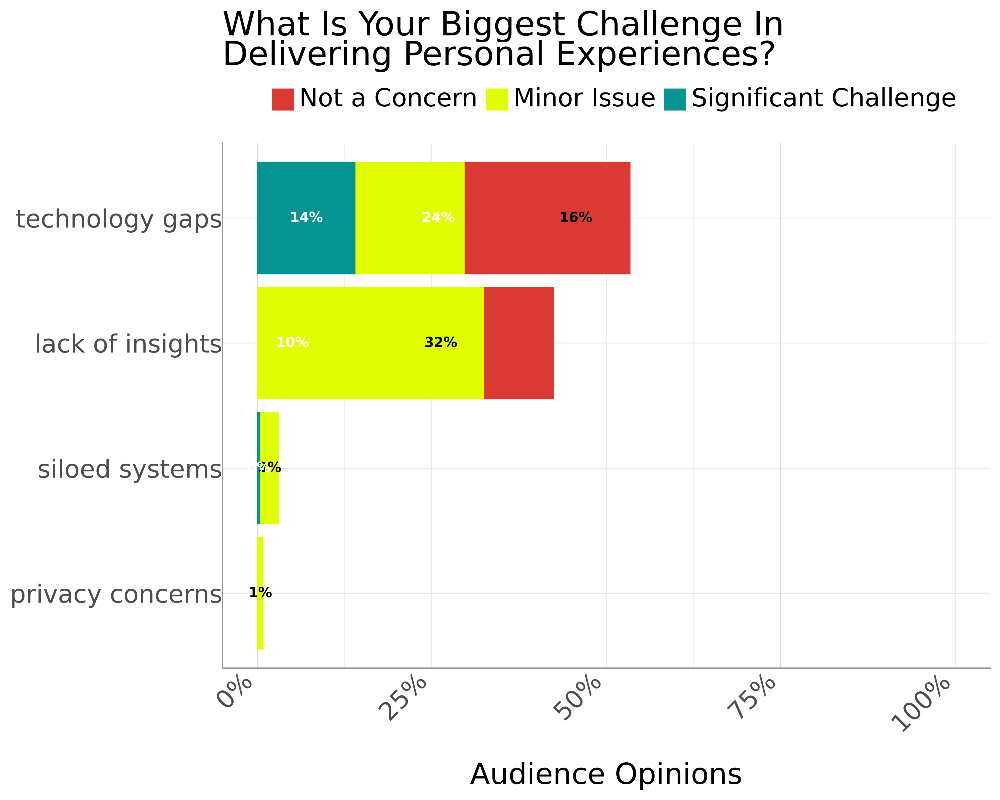
Delivering personal experiences comes with its own mix of challenges. Fourteen percent of CX leaders said technology gaps were a significant challenge, 16% saw them as a minor issue and 24% said they were not a concern.
A lack of insights was reported more frequently, with 32% calling it a minor issue and 10% saying it was not a concern. Siloed systems were mentioned less, with 3% calling them a minor issue, while privacy concerns came up for only 1%.
Oracle’s insights on customer experience challenges back this up. Outdated or insufficient technology can slow the execution and analysis needed for personalization. Missing feedback makes it harder to know what customers want and team silos create a fragmented view of the customer journey. Their advice is to connect the right technology, align departments and build a single, clear view of each customer. This creates a strong foundation for delivering personal experiences.
"It really is all about alignment," Wethman said. "The role of the Chief Customer/Experience officer is shifting to the Chief Alignment Officer. You are aligning the teams that don't typically work together or talk to each other. AND you are aligning everyone around the customer to drive the strategy. In the age of AI, where so much of the insights creation is shifting away from the CX team, being able to drive alignment and action will be a superpower."
Related Article: Customer Journey Mapping: A How-to Guide
Which Area Sees the Most Benefit from Your CX Personalization Efforts?
59% of CX leaders are neutral about whether email campaigns provide the most benefit from their personalization efforts
CX leaders are taking a wait-and-see approach to what benefits personalization strategies most:
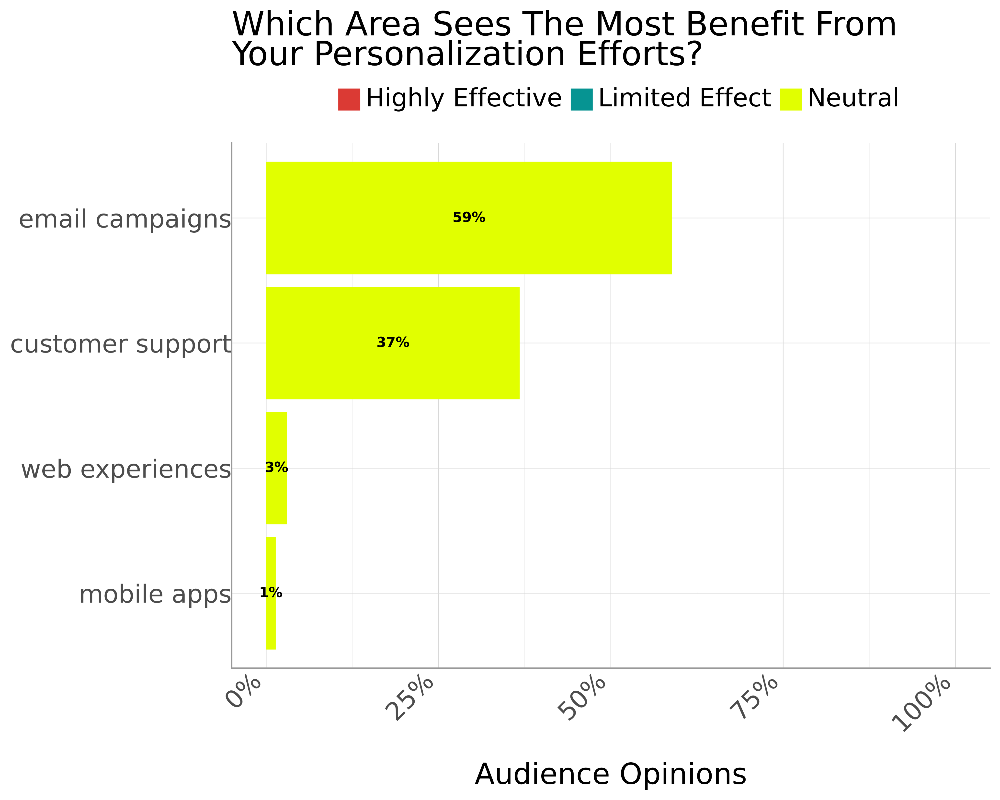
While 59% of CX leaders in our audience identified email campaigns as the area seeing the most benefit from personalization, their view on it was neutral. Wethman called this is a "very outdated way of viewing the value of personalization."
The same sentiment applied to customer support at 37%, web experiences at 3% and mobile apps at 1%. This suggests that while these channels play a role, none are viewed as delivering standout results.
A recent study reinforces that email marketing remains one of the most powerful channels when personalization is done well. It highlights that strategies such as segmentation, dynamic content, behavioral triggers and machine learning significantly boost open rates and engagement. Applied effectively, this could help turn neutral perceptions into stronger results across email and potentially other channels.
Web Personalization Gains Momentum Despite Implementation Gaps
Web personalization is a top priority, with nearly 75% of consumers more likely to purchase from brands that deliver personalized experiences—and those consumers spend 37% more with personalized brands, according to CMSWire research. Despite this, only 24% of customer experience teams say they deliver truly personalized experiences, with most organizations stuck in broad “one-to-many” or “one-to-some” approaches rather than true one-to-one personalization.
Related Article: Top Customer Experience Trends You Should Watch in 2025
Implementation Challenges Persist
While 67% of organizations have implemented some form of personalization, only the most advanced are seeing real ROI. Among companies with effective tools, 49% have deployed AI in their digital customer experience stack, leveraging enterprise-grade platforms, advanced analytics and robust first-party data strategies to predict customer needs and deliver targeted content in real time.
AI Drives Hyper-Personalization Push
AI is ushering in a new era of hyper-personalization, but consumer privacy concerns are rising. About 33% of consumers say they never want personalized interactions from companies, highlighting a growing wariness about data sharing. The demise of third-party cookies and stricter privacy regulations are forcing brands to rely on first-party and zero-party data, which are both more accurate and privacy-friendly. Marketers are investing in technologies that allow for cookie-less measurement and deeper audience insights.
According to Wethman, this is where the barriers that are popping up around privacy are going to end up being the most powerful drivers of innovation. Why? Because it's going to cause all of us to think differently and creatively about how to collect and use the data, she added.
Related Article: Examining the State of Digital Customer Experience
Organizational Barriers Remain
The biggest hurdles? Data quality, legacy systems and organizational silos. Brands that succeed at personalization combine the right technology, quality data, skilled talent and organizational focus. The trend is clear: hyper-personalization is the goal, but balancing privacy, trust and technical complexity is the real challenge for 2025.
Related Article: 4 Hallmarks of Today's Best Email Marketing Strategies
What Kind of CX Data Do You Rely on Most?
Transaction history data is highly valuable for 45% of CX leaders
Among all the data CX leaders could tap into, one type got the majority of attention
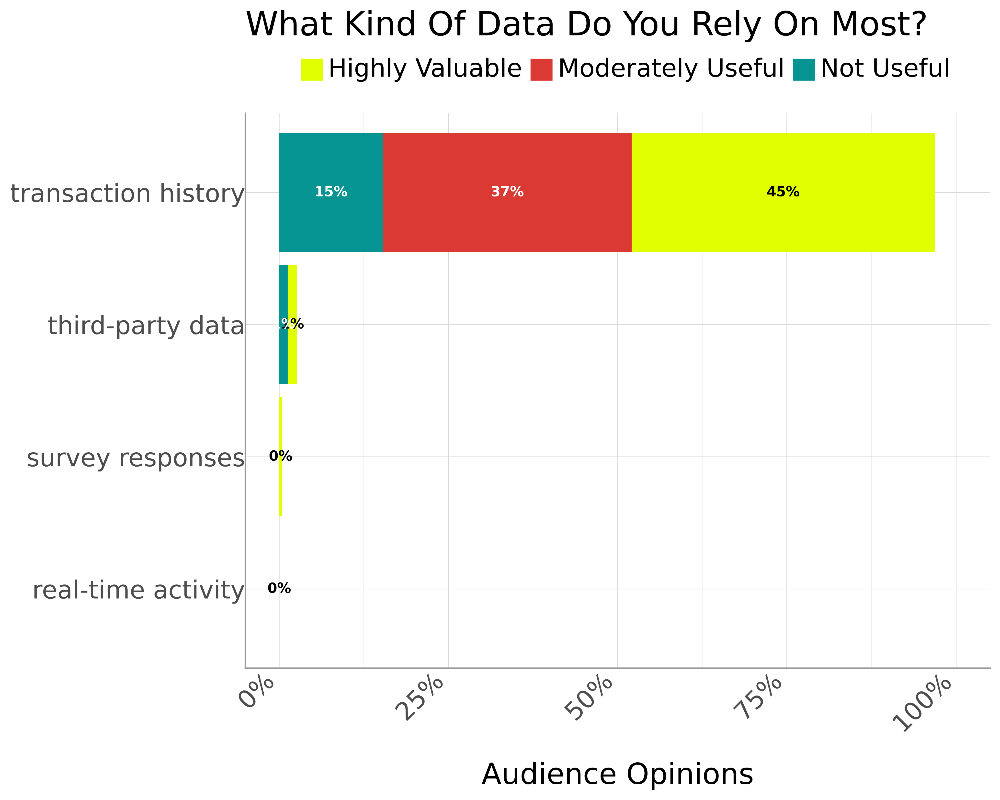
The CMSWire CDP Market Guide 2025 emphasizes that first-party and transaction-level data are becoming the backbone of enterprise personalization strategies, validating why so many CX leaders prioritize transaction history.
CX leaders clearly had a favorite when it came to the data they relied on most and transaction history won by a wide margin. Forty-five percent called it highly valuable, 37% saw it as moderately useful and 15% felt it was not useful. Third-party data barely registered. Just 1% saw it as highly valuable and 1% said it was not useful. No opinions were shared for survey responses or real-time activity.
This heavy leaning toward transaction history reflects a bigger trend. In a PwC survey of more than 1,000 business professionals with over five years of experience using customer analytics, results showed clear benefits, with SaaS companies expecting to increase revenue by $1 billion. That’s a reminder of just how much potential sits in core customer data.
What Defines a Successful Customer Interaction for You?
A seamless experience is essential in defining a successful customer interaction for 76% of CX leaders
When CX leaders picture a successful interaction, one factor towers over the rest:
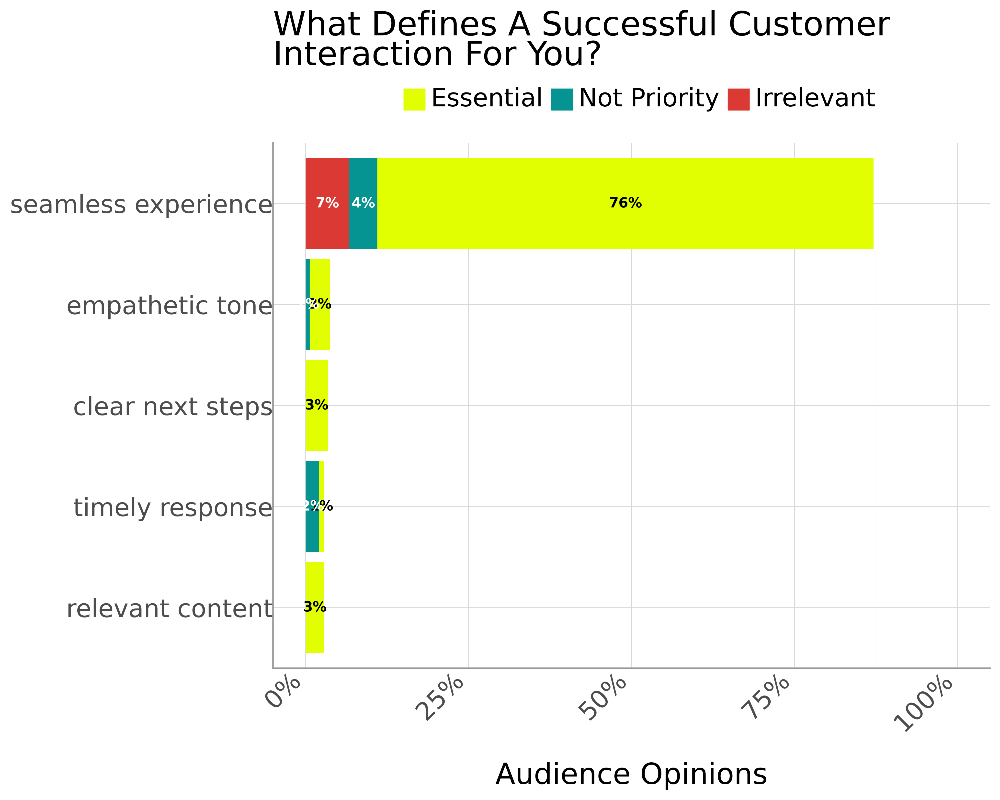
The State of the Digital Customer Experience 2025 report found that 27% of organizations admit to struggles with CX journey consistency, saying their customer journey model is incomplete or flawed. This highlights why seamlessness is the top success marker for CX leaders.
"The ability to define what seamlessness means for your organization is trickier than you'd expect," Wethman said. "This is where your insights partner can help you pull together ALL of the data you should be looking at — behavioral., operation and experience — to tell a complete story and highlight the opportunities."
In defining a successful customer interaction, most CX leaders said it was all about a seamless experience. Seventy-six percent saw it as essential, while 4% felt it was not a priority and 7% saw it as irrelevant. PwC research found that 32% of all customers would stop doing business with a brand they loved after just one bad experience, showing how critical it is to keep every interaction smooth from start to finish.
Everything else came far behind, with an empathetic tone essential for 3% and not a priority for 1%, showing it’s valued but rarely seen as the main success marker. Clear next steps were essential for 3%, hinting that many see them as part of the process by default. A timely response was essential for 1% and not a priority for 2%, suggesting speed alone doesn’t win loyalty. Relevant content was essential for 3%, reflecting a view that personalisation works best as part of the whole journey.
What Technology Do You Find Most Useful for Optimizing CX?
49% of CX leaders agree that AI tools are indispensable for CX optimization
For all the options on the table, one technology proved hard for CX leaders to imagine working without:
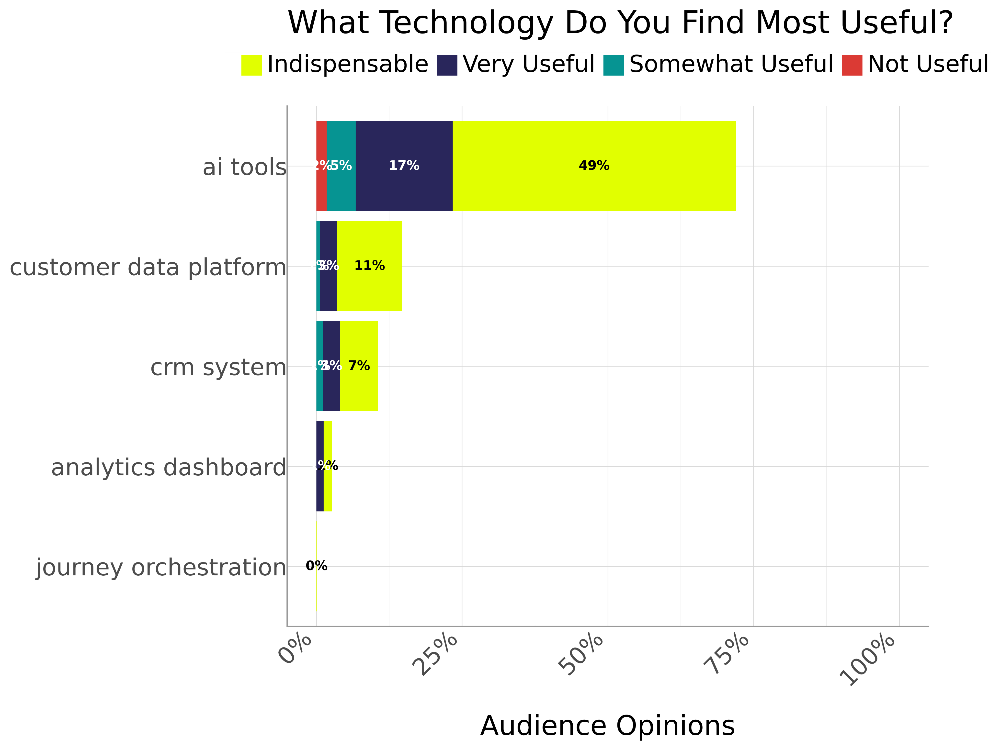
AI tools stood out clearly as the most useful technology for CX leaders. Forty-nine percent described them as indispensable, 17% said they were very useful, 5% called them somewhat useful and only 2% felt they were not useful. This enthusiasm aligned with findings that mature AI adopters, who operate or optimize AI-powered customer service, reported 17% higher customer satisfaction, highlighting why so many see AI as a must-have.
Customer data platforms followed at a distance, with 11% calling them indispensable, 2% very useful and 1% somewhat useful, suggesting they’re valued but rarely seen as the core engine. CRM systems saw 7% indispensable, 2% very useful and 1% somewhat useful, showing their role is important but often complemented by other tools.
Analytics dashboards were indispensable for 1% and very useful for 1%, indicating a niche but focused following. Journey orchestration drew no opinions at all, hinting it’s either underused or still finding its place in CX strategies.
"I find this very disappointing," Wethman said, "but I do think it gets to the fact that too many CX leaders are shying away from exploring the opportunities that exist in this space. It can be a gamechanger for insights."
The CDP Market Guide 2025 shows CDPs are rapidly evolving into enterprise-wide hubs that unify identity, consent and journey data. This suggests the relatively low ranking in this survey may reflect implementation gaps rather than true strategic value.
Related Article: What Is a Customer Data Platform (CDP)? 2025 Guide for Marketers
How Do You Measure CX Impact?
Loyalty signals are impactful metrics for 42% of CX leaders when determining value
The metrics that matter most for CX impact aren’t just about short-term wins:
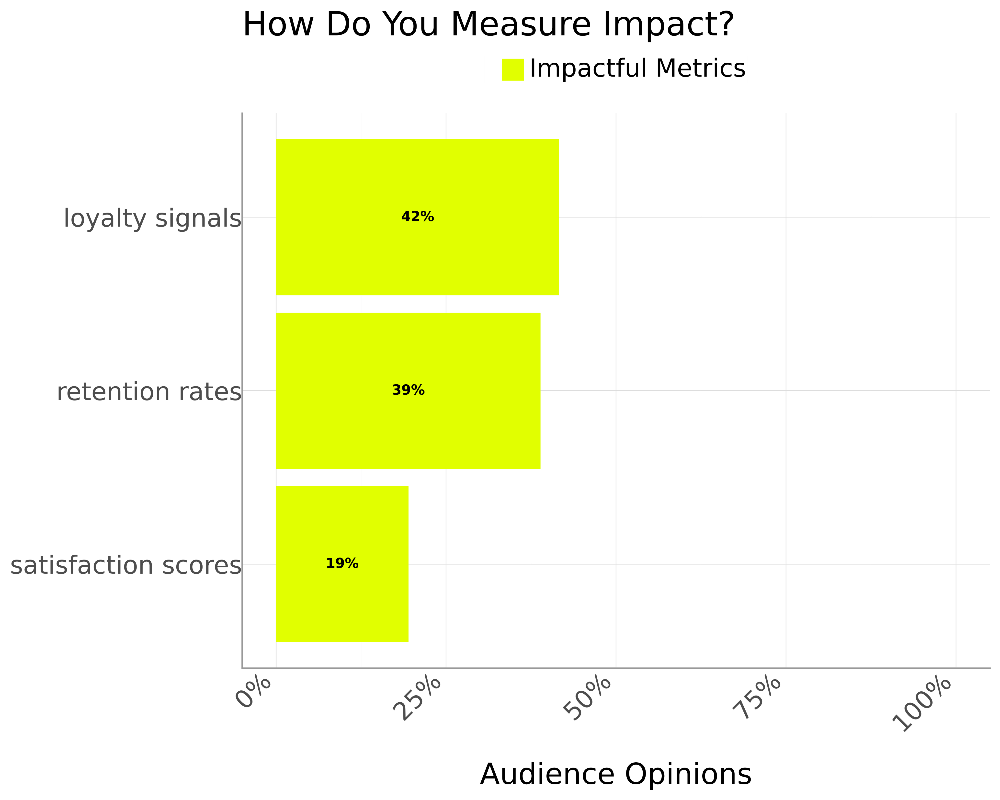
In measuring the impact of CX initiatives, loyalty took the spotlight. Forty-two percent of CX leaders named loyalty signals as the most impactful metric, with retention rates not far behind at 39% and satisfaction scores at 19%.
It’s a focus that lines up with research from Medallia and Ipsos, where 87% of over 800 CX leaders said loyalty initiatives delivered a return on investment and 97% agreed loyalty fuels overall success. Tracking customer loyalty signals and retention rates is more than a numbers game. It’s about keeping a steady pulse on the relationships that shape long-term growth.
What Helps You Uncover New CX Personalization Opportunities?
A/B testing is essential for 76% of CX leaders looking for new personalization opportunities
Finding untapped opportunities takes more than guesswork:
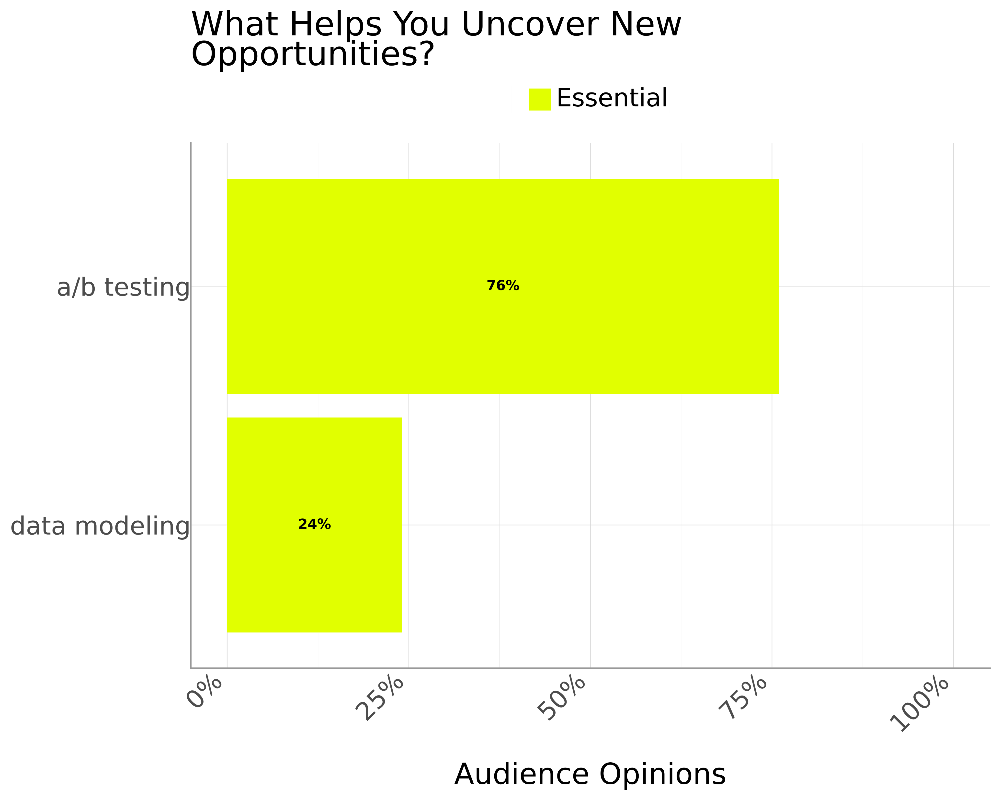
When uncovering new opportunities, A/B testing stood well ahead in our audience. Seventy-six percent of CX leaders called it essential, while data modeling followed as essential for 24%.
Pairing A/B testing with personalization can unlock far more than either approach alone. Testing helps you see which creative elements, layouts or messages land best, while personalization ensures each customer gets the version that fits them. Together, these methods make it easier to uncover what really works, refine experiences for different segments and use real-time data to keep improving. The result is a faster path from insight to action and a better experience for every customer.
What Is the Most Common Barrier to Improving Your Current CX Personalization Strategy?
78% of CX leaders say that a complex tech stack isn’t a barrier to improving their current personalization strategy
Not every so-called barrier to better CX strategy lives up to its reputation:
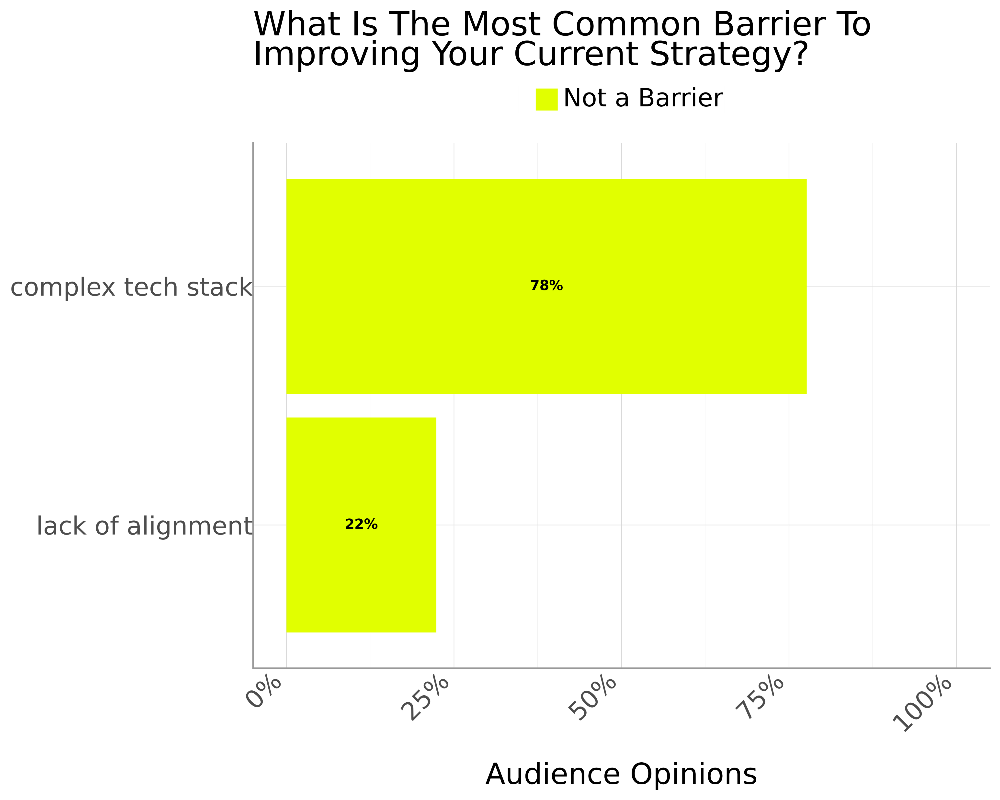
Barriers to improving a current strategy varied, but most CX leaders did not view a complex tech stack as one. Seventy-eight percent said it was not a barrier. Lack of alignment was less easily dismissed, with only 22% who said it was not a barrier.
The DXP Market Guide 2025 highlights that many organizations face integration complexity, with some platforms requiring connections to more than a dozen back-end systems. This helps explain why tech stack sprawl remains a hidden barrier, even if many CX leaders downplay it.
Overlooking tech stack issues can be risky. Disconnected tools can fragment the customer experience, making centralized data critical for consistency. Misaligned technology and business goals blur priorities and slow execution, and when automation overwhelms human connection, CX suffers. The stack itself may not feel like the problem, but its impact depends on how well teams align around it and whether it truly supports efficiency and empathy.
Which Department Do You Align With Most to Meet CX Personalization Goals?
IT departments are in perfect alignment to meet 36% of CX leaders’ current personalization goals
Being in sync with the right department can shape how well you deliver on CX goals:
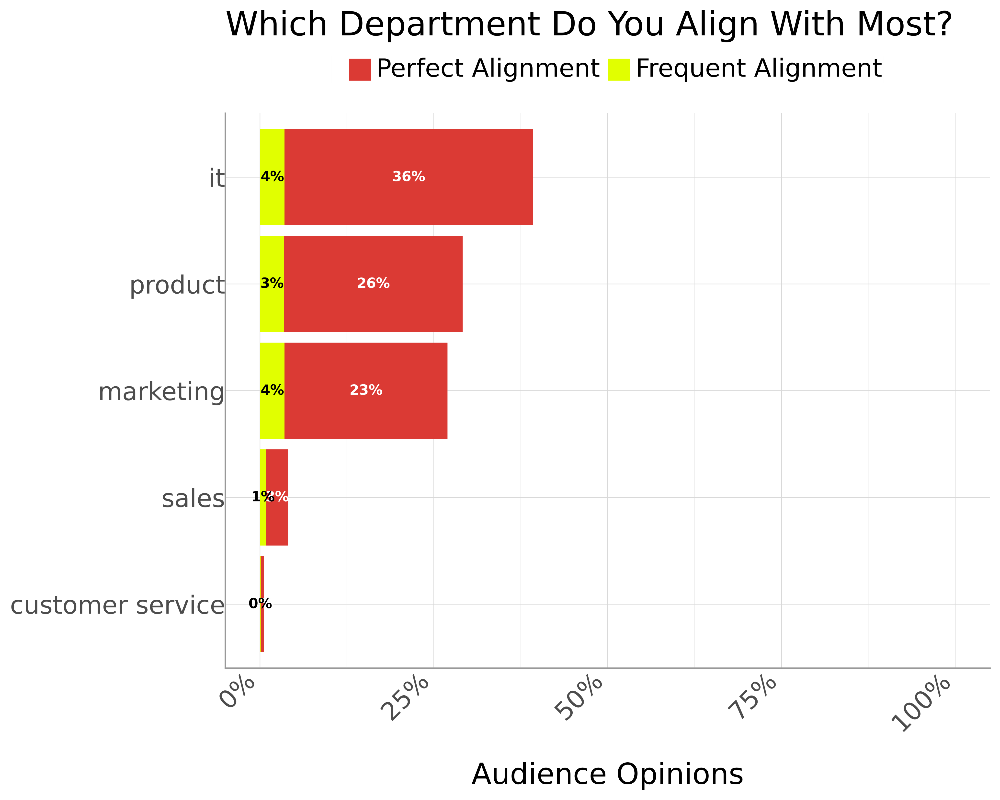
IT takes the lead as the department CX leaders align with most, with 36% reporting perfect alignment and 4% saying frequent alignment. Product teams follow with 26% perfect and 3% frequent alignment, while marketing sees 23% perfect and 4% frequent alignment. Sales showed 3% perfect and 1% frequent alignment and no opinions were shared for customer service.
IT in the lead? Not so fast, Wethman said.
"While it is essential to have alignment with IT product and marketing, any CX team that isn't seeking alignment with customer service is really missing the boat," Wethman said. "I know that too often CX practitioners are given the proverbial 'Heisman' from their contact center peers when it comes to getting into the weeds. However, that's a barrier/door/silo we need to knock down."
A recent Forbes article points out that, while personalization focuses on precision, it’s all about authenticity. Harvard Business Review warns about "engineered insincerity," where automation tries to fake empathy but ends up feeling hollow, damaging the customer experience. Forbes says that alignment across teams is one of the best ways to prevent this.
The State of the CMO 2025 report found that 30% of leaders cite lack of cross-department cooperation as a top barrier to improving CX. This reinforces the importance of alignment across IT, product and marketing teams noted here.
When IT, product, marketing and customer service combine their strengths, they create experiences that are consistent, authentic and connected, turning cross-department collaboration into one of the most powerful safeguards against CX missteps.
Related Article: How Cross-Department Collaboration Fuels a Customer Experience Model
What Is the Top Priority for Improving CX Personalization?
31% of CX leaders say that automation is an important priority for improving personalization
Fine-tuning personalization starts with deciding which levers will move the needle fastest:
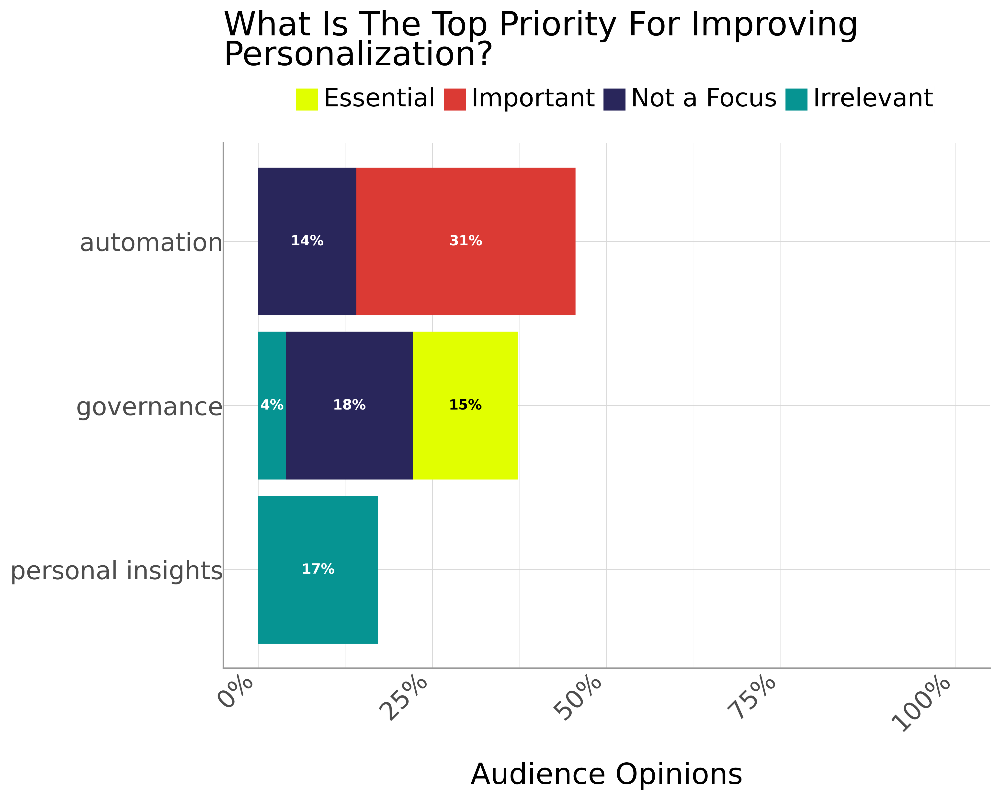
Automation stood out as a clear priority for improving personalization for our audience of CX leaders. Thirty-one percent said it was important and only 14% said it was not a focus. AI and automation has enabled marketers to pair creativity with personalization at scale, helping them reach the right audience with the right message at the right time. By using AI-powered data science to pinpoint high-value segments, refine timing and tailor content dynamically, organizations deliver more relevant, engaging experiences while freeing teams to focus on strategy and innovation.
"A true personalization strategy has to include a good balance of all of these things," Wethman said. "The one that is missing here is customer insights and journey understanding. How can you pick the right places to personalize without understanding the journey and preferences of your target customers?"
Governance followed as another key area, viewed as essential by 15%, although 18% said it was not a focus and 4% saw it as irrelevant. Strong governance can help ensure that personalization efforts are ethical, compliant and consistent, particularly when multiple teams and systems are involved. Personal insights, however, received far less emphasis, with 17% who considered them irrelevant.
How Do You Stay Informed About CX Personalization Trends?
Industry reports keep 97% of US CX leaders informed about personalization trends
For most CX leaders, there’s one go-to resource that keeps them ahead of the curve:
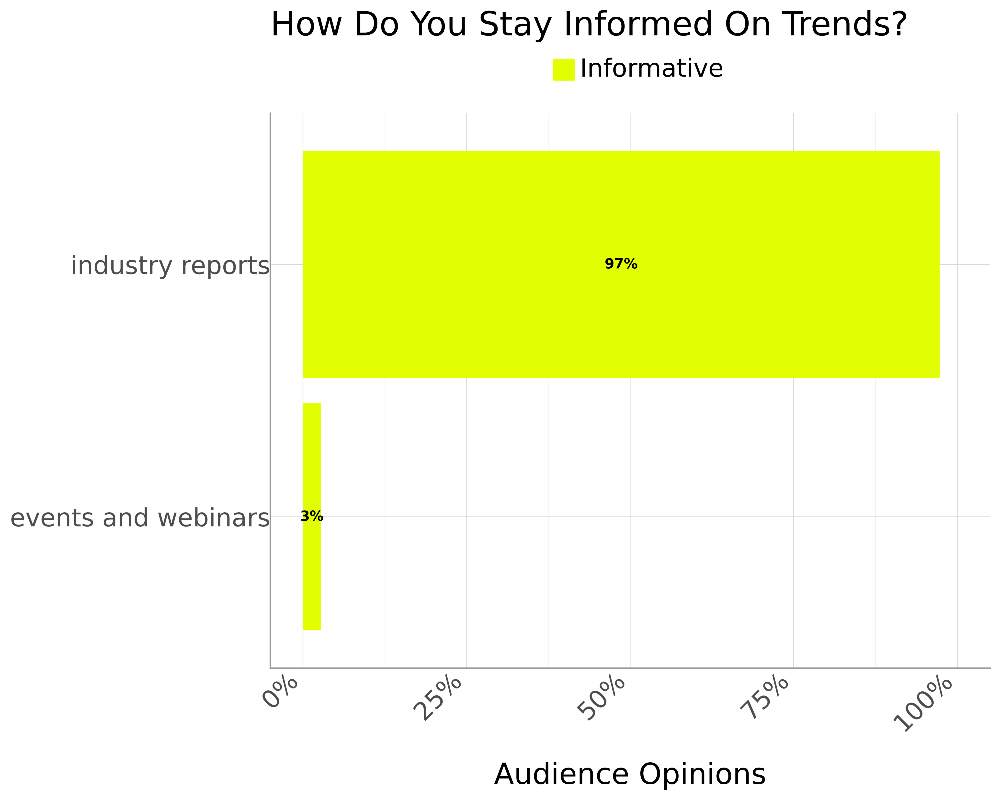
Industry reports were by far the most relied-on source for staying informed on trends, with 97% of CX leaders finding them informative. Events and webinars followed at just 3%. Reports provide a concentrated view of what’s shifting in the market, backed by research and expert insight.
A great example is CMSWire’s annual State of the Digital Customer Experience report, which offers a comprehensive look at the evolving CX stack. This kind of detailed analysis helps leaders spot opportunities, benchmark their capabilities and stay ahead of changes shaping the customer experience space. While events and webinars have their place, it’s the depth of insight in reports that keeps them central to strategy.
How Often Do You Review Your Personalization Efforts?
66% of CX leaders are neutral about reviewing their personalization efforts monthly or quarterly
CX leaders tend to take a steady, measured approach to revisiting their personalization strategies:
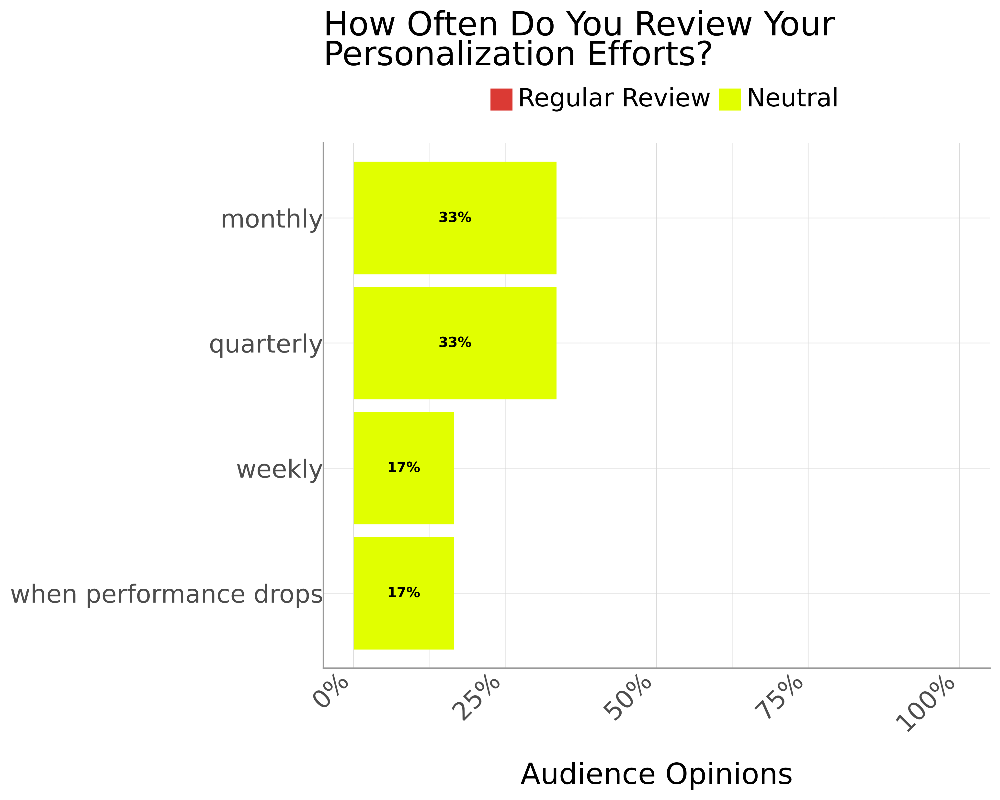
All the CX leaders in our audience took a neutral view on how often they reviewed personalization efforts. Thirty-three percent reviewed monthly, another 33% quarterly, 17% weekly and the same number only when performance dropped.
There are strong indicators as to why these reviews matter. While brands report personalizing 61% of customer interactions, only 43% of customers feel that personalization is actually happening. This gap shows the importance of regularly checking whether strategies are hitting the mark. With personalization climbing 50% in priority since 2022 and budgets rising by 29% year over year, consistent reviews help ensure that increased investment delivers experiences customers recognize and value.
How Do You Keep Your Personalization Messaging Relevant?
29% of CX leaders keep personalization messaging relevant with customer personas
Keeping messaging relevant comes down to tried-and-true tactics:
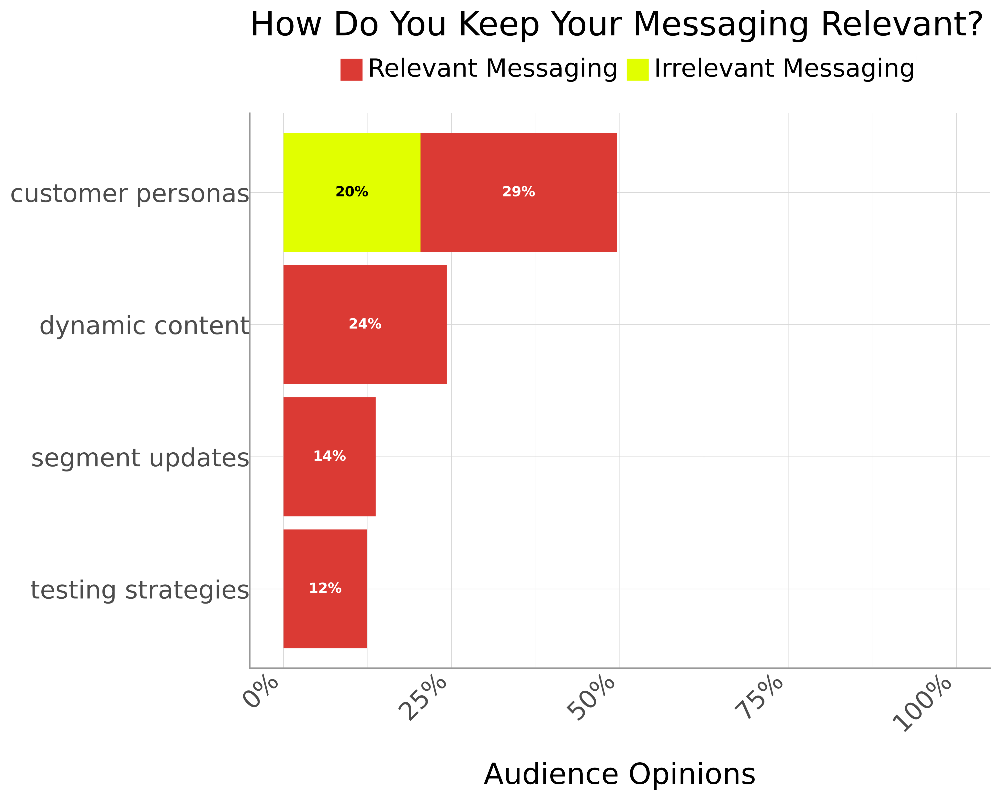
For many CX leaders in our audience, keeping messaging fresh and relevant meant leaning on the same dependable tools. Twenty-nine percent saw customer personas as relevant, though 20% felt they were irrelevant, reflecting how foundational audience understanding remains. Dynamic content was considered relevant by 24%, showing its value in keeping messages timely and adaptable.
Segment updates were relevant for 14%, pointing to the importance of refining targeting as audiences evolve. Testing strategies rounded out the list at 12%, highlighting a more measured approach to experimenting with new messaging angles.
Deloitte’s personalization research gives a contemporary twist on personas with its Personalization Affinity Score, segmenting customers into archetypes — skeptics, observers, opportunists and fanatics — based on their openness to personalized experiences.
By understanding which group a customer belongs to, brands can tailor their messaging to resonate more strongly. This behavioral lens turns personas from static profiles into living tools, helping teams focus their efforts where personalization is most likely to connect.
Which City Best Represents Your Primary Work Location?
65% of US CX leaders say that San Francisco is a potential choice for their primary work location
The map of primary work locations for CX leaders has one clear focal point:
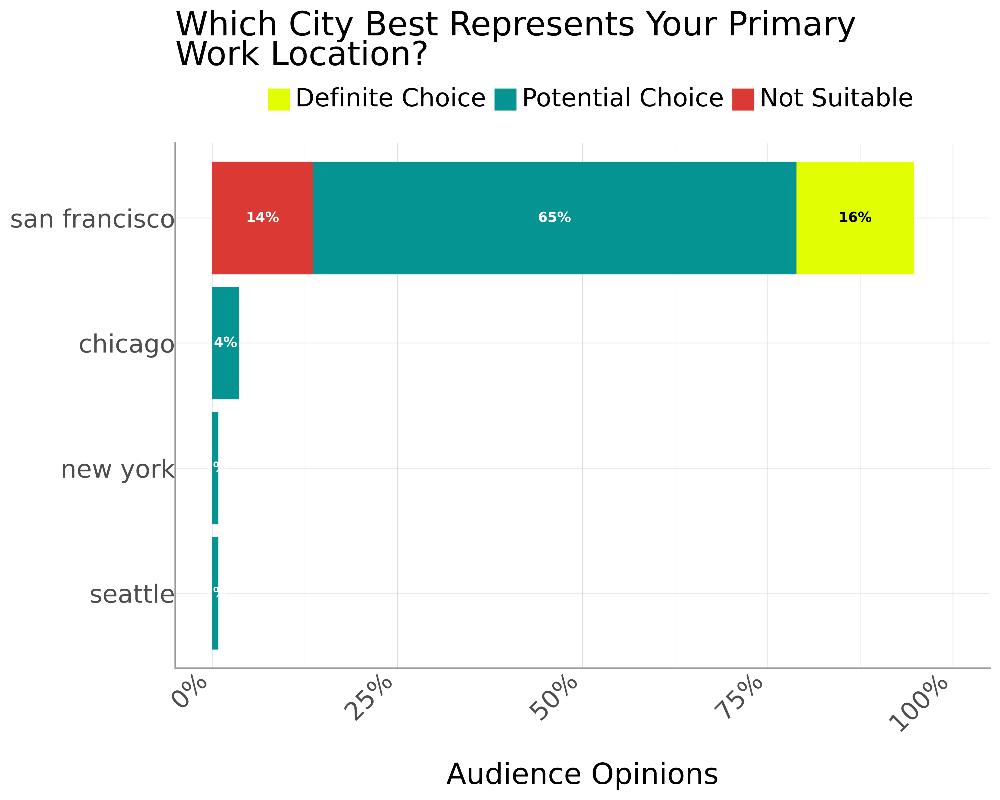
San Francisco stood well ahead as the city that represented their primary work location for US CX leaders. Sixteen percent saw it as a definite choice, 65% viewed it as a potential choice and 14% considered it unsuitable. Chicago followed distantly, with 4% seeing it as a potential choice, while New York and Seattle each drew 1% as a potential choice.
The clear pull toward San Francisco reflects its long-standing reputation as an innovation hub, offering a mix of industry presence, talent and networking opportunities that appeal to many CX professionals.
A New Era of CX Personalization
The evolution of CX personalization is being shaped by the choices, challenges and successes of leaders on the front lines. These insights from more than 300,000 CX leaders have revealed where priorities are shifting, how strategies are evolving and what’s driving the next wave of innovation.
The way forward lies in pairing smart technology with human insight to create experiences that feel timely, relevant and truly personal.
Methodology
Sourced using Artios from an independent sample of 328,129 United States CX leaders' opinions across X, Reddit, TikTok, LinkedIn, Threads and BlueSky. Responses are collected within a 95% confidence interval and 5% margin of error. Results are derived from opinions expressed online, not actual questions answered by people in the sample; the research leverages AI-driven audience profiling to synthesize insights from online discussions for a year, ending Aug. 4, 2025, to a high statistical confidence level.
About the representative sample:
-
54% of CX leaders in the US are between the ages of 35 and 64.
-
48% identify as female and 52% as male.
-
34% earn between $40,000 and $80,000 annually.
